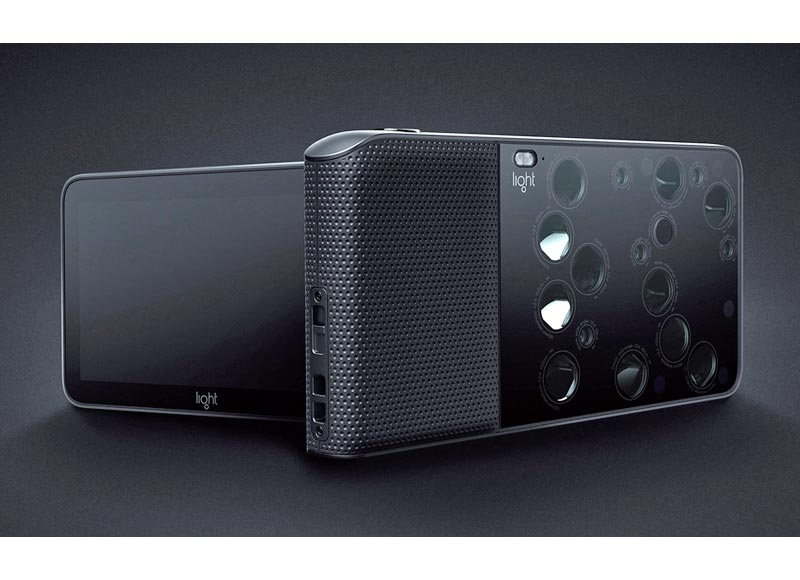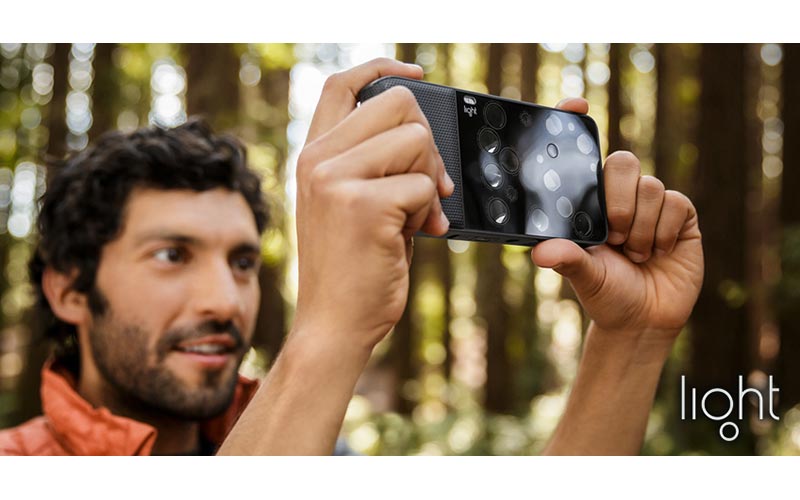In development for two years, Light has announced the L16 Camera, a new “folded optics” technology that aims to target DSLR consumers with a slim, compact design, housing sixteen individual 13MP cameras. The L16 is about the size a thick iPhone 6+, but claims to capture high-resolution images up to 52 megapixels.

According to Light’s co-founder Dr. Rajiv Laroia, “The Light L16 Camera is the first multi-aperture computational camera. The L16 makes it easy for anyone to take DSLR-quality images, and is small and light enough to fit in your pocket. Light’s technology combines folded optics with sophisticated computational imaging algorithms to deliver the highest quality images from the smallest possible device. We are trying to replace a big lens with multiple small lenses and small sensors.”

The L16 features 16 lenses and one IR sensor in specialized pattern across the back of its body. The lenses are grouped into three focal lengths: five 35mm lenses, five 70mm lenses and six 150mm lenses, offering an effective optical zoom range of 35-150mm. When shooting at one of the three focal lengths, the camera fires 10 of the cameras at once and then computationally melds them into one high resolution image. Light claims the camera’s computation algorithm also provides effective low-light imaging with minimal noise and, most importantly, enables focus and depth of field to be adjusted after the picture has been taken, similar to the tech behind the Lytro “light field” cameras.
The camera contains a five inch touchscreen LCD on the back for composition / playback and addressing the menu options, as well as a power and shutter buttons on the top. A built-in flash, a rechargeable battery (good for a claimed 400 shots) and Wi-Fi is also on board.
No official pricing has been announced, but Light hopes to have the camera out for the 2016 Holiday season for about $1700.
The Future: It’s hard to image that Light, based in Palo Alto, California, will be able to deliver a “must have” stand-alone camera, which will upset the DSLR market, especially at a reported 1700 bills. The camera does seem compelling, especially the low-light and depth-of-field attributes, but, like the Lytro, will only find a niche market. However, if the company can successfully and economically implement a version of the the technology into smartphones, it may find some traction.

